In November I packed (and bundled) up for Wisconsin…land of delicious cheese curds and bitter cold. Oh, and 100-year-old flooded iron mines. I landed in Madison feeling lucky to have received an invitation from Wisconsin Historical Society underwater archaeologist Tamara Thomsen to help on a very special project.
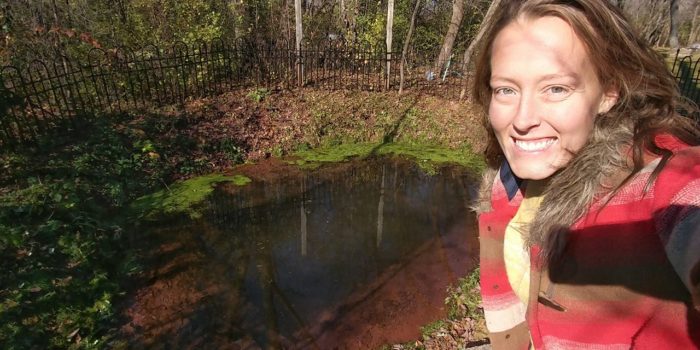
Captain Roberts Mine has an interesting history as one of a few iron mines to occupy Wisconsin’s Baraboo Range. About a century ago, the mine was opened by Captain Roberts, the superintendent of the recently defunct Illinois Mine, which sits directly across the street. It is believed that Captain Roberts robbed power and machinery from the Illinois to keep his operation running. However, water was the ultimate downfall of his latest venture, as the porous soil of the range required the mine to constantly run its dewatering pumps. From observations of the mine’s final resting condition, it is thought that the pump broke one day and the mine was abandoned and flooded after workers were unable to fix it.

Enter Tammy and her coworkers at the Wisconsin Historical Society. Tammy’s work is primarily in maritime archaeology, but as owner of Diversions Scuba and an avid cave diver, she also has a penchant for any project in an overhead environment. In 2014, armed with a few photos and newspaper articles, they discovered the remnants of Captain Roberts Mine on the property of Greg and Donna Georgeson. A few exploration dives later and the project was put on hold until November 2017.
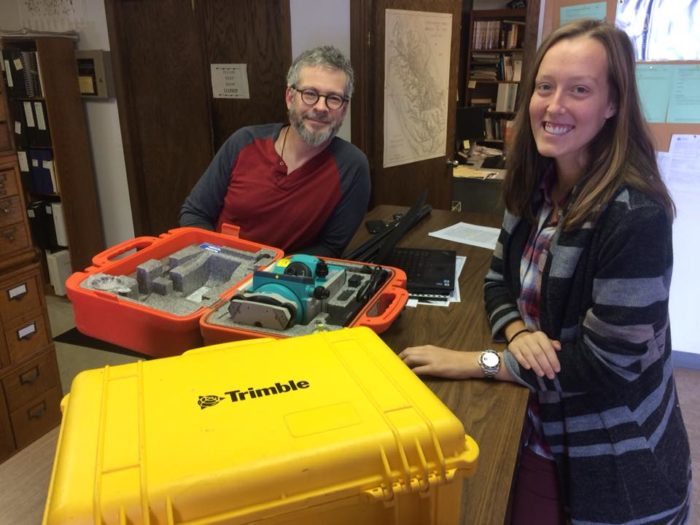
Upon my arrival in Madison we got straight to work. In just 10 days we were hoping to complete a full survey of the underwater and above-ground structure, as well as use photogrammetry to make 3D models of some of the underwater artifacts (my task). Each day we left early in the morning with dive and survey gear packed into the truck. After a pit stop to fill our thermoses with something warm to drink, we arrived at Captain Roberts Mine site in La Rue. We worked on a rotating dive schedule, with Tammy and her coworker Caitlin Zant focusing primarily on the underwater survey of the mine while I obtained the images for the 3D models. Terrestrial archaeologist Paul Reckner joined us to help with the survey of the above-ground structures. The water was 46 degrees F, and we were lucky that there was a small shed on the property that the landowners put a heater in so that we could warm up between dives!
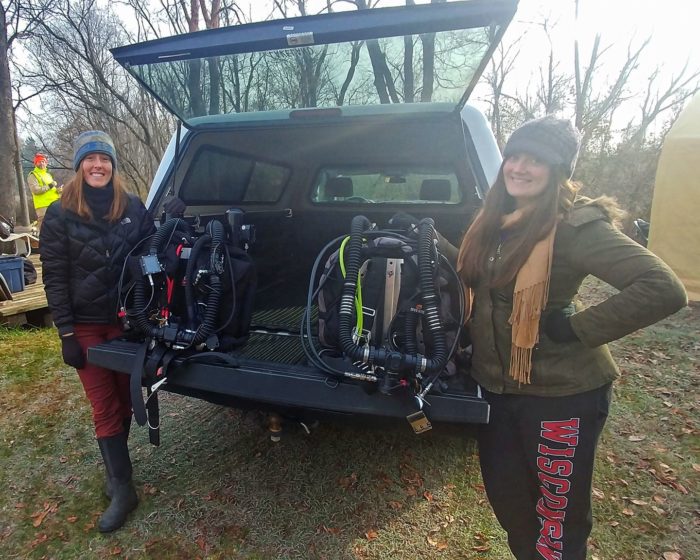
The mine has a 75 feet deep shaft extending straight down that joins up with an approximately 200-foot-long linear passageway. The mine appears frozen in time – carts, drills, and tools lie exactly as the miners left them. The passing of time is evident only by the thin reddish layer of silty iron oxide that covers everything.
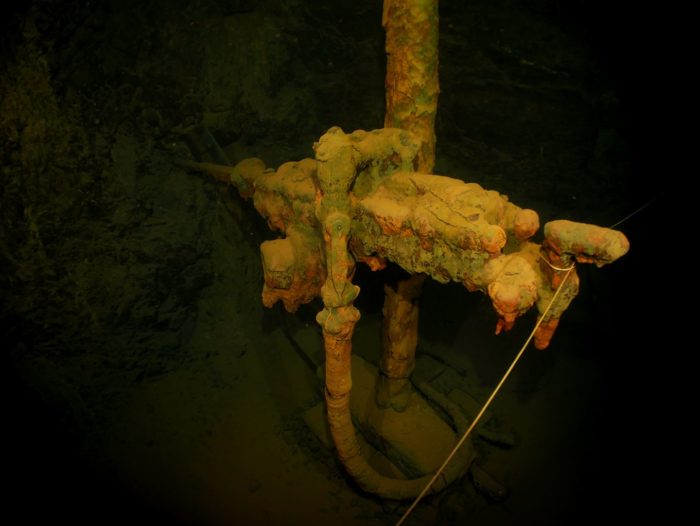
Ultimately, the surveys above and below ground were successful and I was also able to create 3D models of the cart and drill artifacts (like the one above). After days of data processing and application assembling, we received approval to assemble a National Register of Historic Places nomination that includes both the above and below water portions of the site.
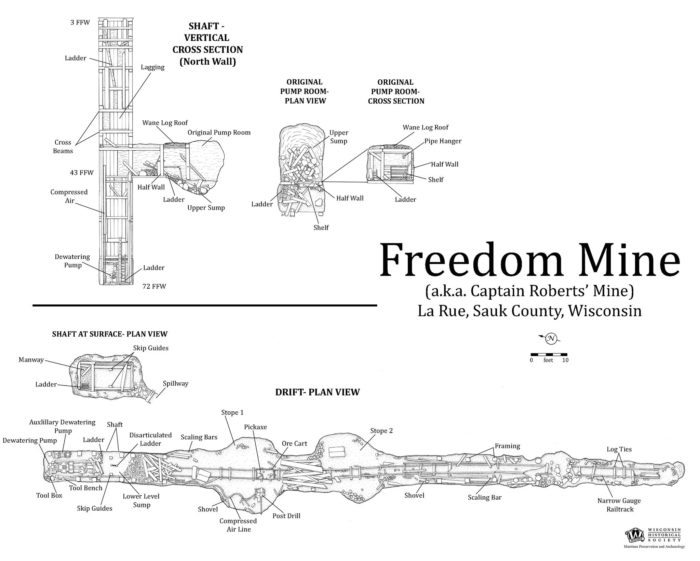
I am excited to have been part of this ongoing project and to have had the opportunity to work with such dedicated archaeologists. Thank you to Tammy for opening her home, dive shop, and office to me. Much thanks also to landowners Greg and Donna, as well as Caitlin and Paul for their hard work. Thank you to John Janzen for your photography and videography work.
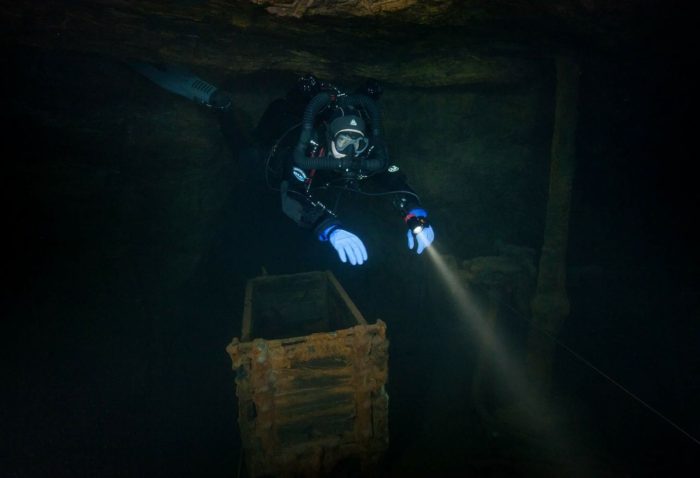
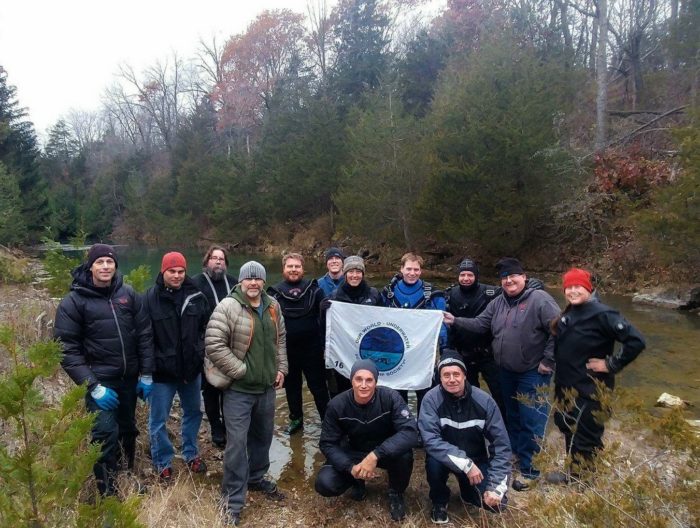
Thank you to Rolex and OWUSS for sending me on this journey. Thank you Subgravity for providing me with a Defender CCR, the ultimate tool for this type of project. Thank you also to DUI for my excellent fitting drysuit and to Fourth Element for keeping me warm in the chilly ground water with a Halo 3D undergarment! To Nauticam and Reef Photo & Video, thank you for providing the underwater camera rig I used to document the mine and create the 3D models of artifacts. Thank you also to sponsors Aqualung and DAN for providing gear and peace of mind.
Stay tuned for stories from Texas and Kenya!